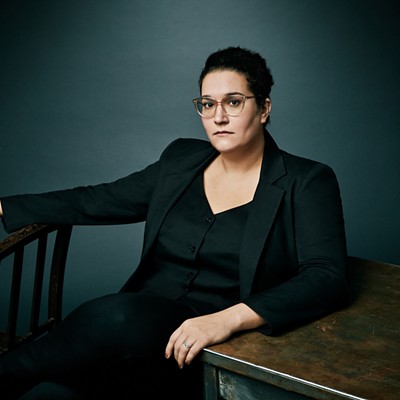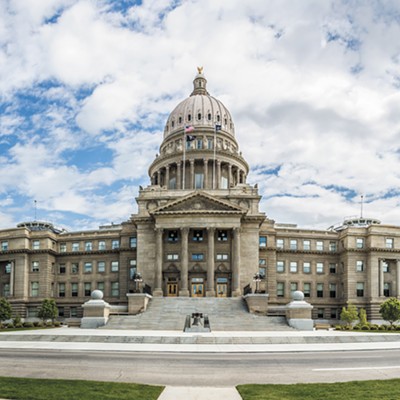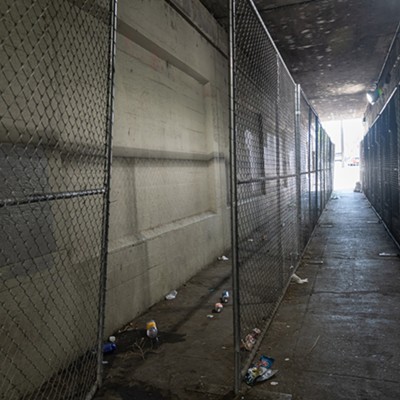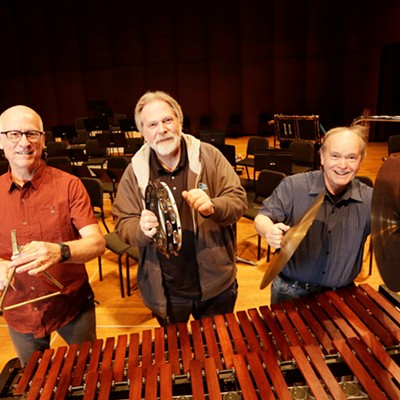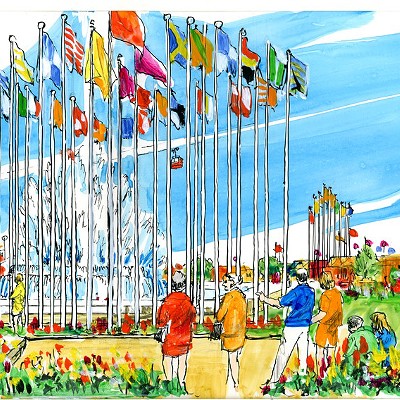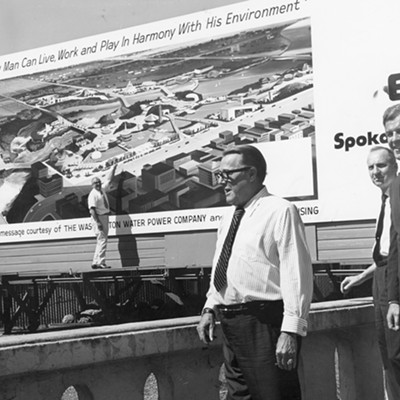“Imagine moving to a place where you can leave your front door unlocked as you run your errands… where if you decide to play hooky from work, you can drive just 20 minutes and put your sailboat on the water… where suburban blight has yet to spoil your vistas.”
Sound familiar? It should.
For his new book, Searching for Whitopia, social commentator Rich Benjamin spent a year visiting “whitopias” — quiet, charming, booming towns that are receiving massive inflows of white residents — setting their explosive growth against the projection that whites will no longer be the majority in the United States by 2042. Among these bustling burgs? St. George, Utah; Forsyth County, Georgia; and Coeur d’Alene.
Benjamin spent four months in a Hayden Lake cabin in 2007 — throwing dinner parties, chatting with Mayor Sandi Bloem and retired LAPD officers and attending a white separatist conference in Sandpoint. He took a few minutes this weekend to speak with us from New York.
INLANDER: You write extensively about the massive Californian migration into North Idaho. Why did Coeur d’Alene become such a popular destination?
BENJAMIN: The first reason is that Coeur d’Alene’s Chamber of Commerce explicitly recruited folks from California. They ran ads in California, saying, ‘Hey, if you’re leaving Southern California, please keep us in mind as a destination.’ Another reason is because of the gorgeous natural beauty surrounding Coeur d’Alene, which you’re familiar with. Another reason is the perceived comfort and safety of that area.
There are multiple layers of racial and class anxiety in the picture you paint of the city — where conservative Idahoans worry about the effect of richer (but perhaps even more conservative) Californians coming and changing the place. What role do you think the latter play in Coeur d’Alene today?
I don’t want to sound like I’m making a cheap shot against the Californians, but it’s true. What the Californians do is, first of all, drive up the home prices. I’ve heard myriad complaints against that. Second of all, they changed the quality of the local atmosphere, in terms of civility, in terms of friendliness. And I’m not saying all Californians are bad. I’m saying aggregate, in total, big picture. That’s what happens. The housing prices go up, there’s a change in the local texture and culture, and one example is civility.
I remember one woman in a big old Mercedes SUV practically driving me off the road and then flipping me off on 95, in traffic. Those are the concrete negative effects.
The stereotype is that Idaho is racist. That’s not at all what I found. I was finding that the Californians are importing the racism. Richard Butler was not an Idahoan. Richard Butler was a Californian. And I have no way to prove this, [but] in some ways, the Californians brought their own anxiety and racial tension with them to Idaho.
You hung out with retired LAPD officers now living in North Idaho. What role does that particular sub-set of Californians play?
They make Coeur d’Alene feel safer. I heard that time and again. That’s one change. But I would not single out those police officers for making Idaho even more conservative. In other words, the retired police officers are no more conservative than, let’s say, retired locksmiths, or a retired banker, or a retired lawyer. They’re part of the California migration. No better, no worse.
Despite being an outsider and a black man in North Idaho’s whitopia, you seemed to be well-received.
It was very hospitable. I had a ball. Between the fishing and the golf and the outings. My first demolition derby ever was at the Kootenai County Fair. But there’s an old joke. One black man is a delightful guest, 50 black men is a ghetto. The question becomes, if I brought 50 of my friends, what would the treatment be?
[But that congeniality is] one of the running themes of the book — that, as Americans, we should pat ourselves on the back. Interpersonal race relations have drastically improved since my parents’ generation — 20, 40 years ago. The question is: How do we change the larger forces — how markets behave, or how public policy shakes out — that make for racial equality or racial segregation in America? It’s not the interpersonal dynamics. It’s often the institutions. It’s a question of power.
You write that Coeur d’Alene’s history with the Aryan Nations has put race at the forefront of public consciousness here in a way that it hasn’t elsewhere. Why is that beneficial?
Because of the Aryan Nations drama and the Aryan Nations public relations disaster, Coeur d’Alene and North Idaho had to have public conversations about race that many whitopias did not and have not had. [That] puts Coeur d’Alene a step ahead of the other whitopias, [which] will have to have this conversation sometime between now and 2042.
So what’s next? Whites will no longer be the majority by 2042, but you’re still going to have pockets — like Coeur d’Alene — where that won’t be reflected. What is the consequence of these whitopias? What needs to happen in the next 33 years?
I think that we as Americans need to have a conversation, and those who want an integrated, equitable democracy should take the actions to prepare for this moment of 2042, such that we do not become a Balkanized country. That has destroyed other countries. You might remember the immigrant riots in France. As Americans, we can do better. We don’t have to have that fate.
The book recommends that as the government builds new communities, as the government builds new highways and broadband access and roads, the government should not subsidize segregation with tax dollars. Eisenhower gave preferential home policies toward suburbans, all of whom were white. He built up the highways in a way that incentivized white flight — at taxpayer expense. Obama should not do that.
Now we have a golden opportunity to not expand and improve America’s working resources in a way that contributes to segregation.




